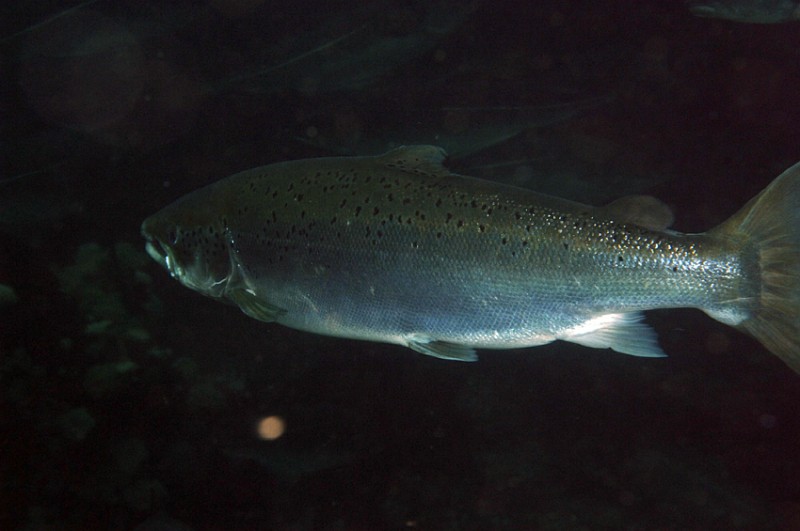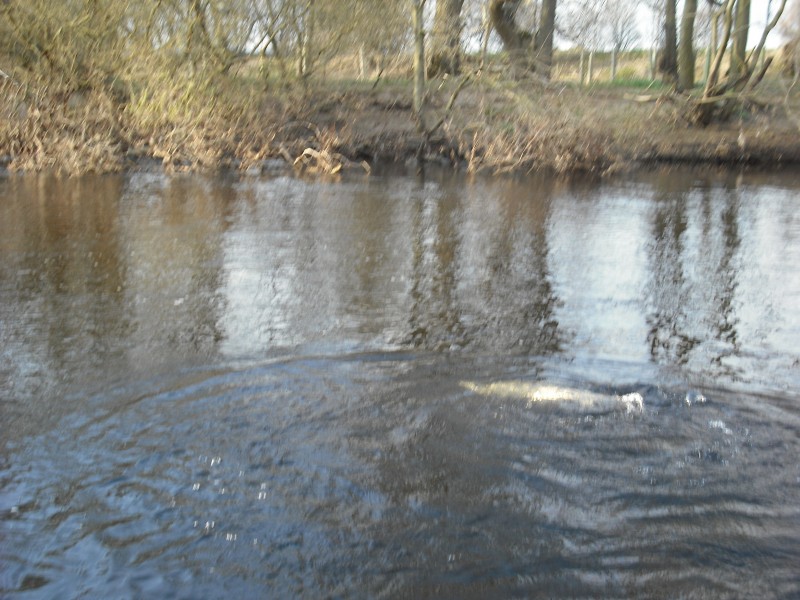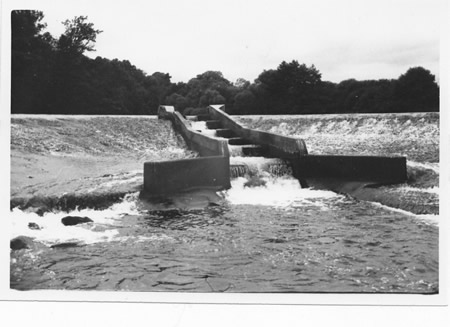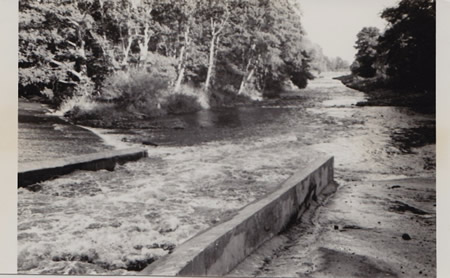These bulletin blogs represent news about Finavon and the South Esk, and my views as a riparian owner. They are not the views of any other organisation, nor are they designed to promote the interests of any individual or organisation other than Finavon Castle Water and factors affecting the fishery. Tony Andrews
The South Esk must be one of the most badly treated Scottish east coast rivers. Similar to the lethal pollution meted out to the Aberdeenshire Don from paper mills, the South Esk suffered long term damage from badly constructed and maintained dams, over exploitation by nets, Brechin sewage & paper mill pollution, and a general disregard for one of our most productive small rivers. It just surprises me that the river has stocks of both salmon and sea trout as healthy as they are today. But the river’s fortunes are changing…
The South Esk is benefitting enormously from its SAC status. Money has been spent on improving habitats for spawning and juvenile fish in the upper catchment and tributaries. As a priority catchment for dealing with diffuse pollution from agriculture, SEPA is developing a model regime of controls and incentives for farmers. The South Esk Catchment Management Partnership is raising public awareness of the importance economically and socially of The South Esk to Angus. In addition to these external influences on the river’s wellbeing the Esk Rivers Trust has done some sterling work to eradicate giant hogweed and Japanese knotweed, as well as some innovative and important habitat improvement work in Glen Clova, especially the planned Rottal Burn restoration project. But the trust is strapped for cash while the Esk Fishery Board is sitting on cash reserves of over £300,000. It would seem that the board does not view its capital assets as the rivers for which it is responsible. Quite why the board has such large reserves at a time when the rivers, not least the South Esk, need investment, is beyond my understanding (George Pullar doesn’t want to sell his netting rights, so forget that). If there is a ‘rainy day’ they are waiting for, perhaps someone could explain what that rainy day is! It could therefore be argued that in terms of freshwater and terrestrial management the South Esk is in a better place than it has ever been, but it could be a lot better if the Esk Trust had more resources to build on its successes.
The two major problems that affect the numbers and quality of returning salmon and sea trout are high mortality at sea and the unknown impact of mixed stocks exploitation. Only one of these is under our direct control, but one thing is absolutely clear – that we must continue to improve the conditions in the river and its tributaries to enable the maximum number of naturally generated smolts to leave the river in the spring of each year. At the end of the day the river is a natural ‘smolt factory’ and the success of our management of the freshwater environment can be measured by the numbers of smolts produced by the river. We should be measuring this output.
During the years of relative abundance we could expect between 25% and 30% of our smolts to return to the river as adult fish. In the 1960s and 1970s there was also a number (details unknown) of ‘second-returners’. These reconditioned kelts returned to the sea and recovered sufficiently to return to spawn for a second time. Most of these second returners were female and were therefore important ‘egg carriers’. Nowadays we expect to see only the very occasional second returner. It is interesting to note that in Canadian rivers, especially the Mirimashi, the return rate of spawned fish is very high. On my recent visit to Canada the river Mirimashi biologist told me that the return rate was thought to be “about 30%”. An interesting aspect of the Canadian post kelts is that they wait in the Bay of Fundy for the outgoing smolt migration before heading off north into the Labrador Sea. Biologists are speculating that these older fish may be showing the post-smolts the way to the feeding grounds – effectively ‘shepherding’ them along the migratory route!
A quote from the Menzies report of 1957 explains a key feature & influence on S Esk spring runs, “The dykes are of oldstone construction, but if any are fronted & coated with cement the obstruction to fish is increased very greatly and what was formerly comparatively harmless may have become very serious. Watch should be kept for repairs”. (Menzies 1957). I will publish the Menzies report in this bulletin soon.
The relationship of FCW spring catches to numbers of spring salmon caught at Upper Kinnaird, which is the double bank beat from the Kinnaird Dyke down to the Boat Pool – a total distance of about 1500 yards, tells the real story of why the South Esk has not returned stronger spring salmon catches from the middle and upper river. If you look at the period from 1977 to 1990 you will see that Upper Kinnaird was consistently giving returns of 200+ salmon, the bulk of which were caught before the middle of May. During the same period Finavon’s spring catches were lacklustre – to say the least. Since 1998 the Kinnaird Dyke has been much improved, thanks to a simple but highly effective adjustment by Colin Carnie. The situation today is that spring salmon disperse throughout the middle river in March. I would not be a bit surprised in the next few years to see the occasional early salmon caught at Finavon in February.
A note on netting (by CB): “Net & coble were worked to the foot of Brechin Papermill Dyke. 16 nets fished 5 miles of river below Brechin until 1897 when all nets were removed from fresh water. There were two other dykes below below Brechin, East Mill & Balbirnie” (Calderwood). The Brechin Papermill Dyke was removed in 1935 (Grimble’s salmon rivers of Scotland 1913 has a good picture of this dyke on page 134). Other references **”Vicissitudes of an Angus river “by AG Chalmers (Eskmount Finavon II 1935). Excerpt from Country Life 22/4/1965 and W Jamieson R.South Esk Kinnaird Castle F III 21.
**I will publish “Vicissitudes of an Angus River” in this bulletin soon.
Some idea of the potential of the South Esk can be seen in the 111 years of records, especially in wet years (when coastal netting is less effective) or in years of great abundance. But there isn’t much doubt that the obstructions within the river (thankfully mostly now removed except for Kinnaird Dyke) have been a major cause of preventing salmon and sea trout getting up into the upper river to spawn. It really is amazing that stocks have held up so well, but imagine what it could be like if the river had been better managed….
Best years for spring salmon at Finavon: 1925: 64, 1947: 36: 1940: 35, 1945: 34, 2006 & 2011: 33, 1941: 32. Cyril Butler (CB) wrote, “April ’39, ’40, ’41, ’47 very good fishing. ’50, ’51, ’52, ’53 very poor. Salmon recover in ’54. Thereafter getting steadily worse though fishing in May improving until 1967 (UDN)”
Worst years at Finavon
1918, 1929, 1933, 1984: No Spring fish
1902, 06, 07, 12, 46, 51, 68, 71, 75, 85: one fish only
Averages of recorded spring salmon catches at Finavon over 111 years
Average spring 1900 to 2011 = 11.76 salmon
Average 1900 to 1925 = 9.69 salmon (26 years)
Average 1926 to 1956 = 15.35 salmon (31 years)
Average 1957 to 1987 = 9.03 salmon (29 years)
Average 1988 to 2011 = 12.24 salmon (21 years)
Average 2006 to 2011= 21.0 salmon (6 years)
A point of interest: During the six years 2006 to 2011 Inshewan’s spring catches were 29, 8, 28, 15, 6 & 28 giving an average of 19 spring salmon (Inshewan is 5 miles upstream of Finavon)
1. It was a considerable surprise to learn that the last 6 years have shown the best spring salmon catches at Finavon since the 1940s .
2. These improved catches may well be connected with the end of coastal netting south of the river’s estuary in February, March and April since 2006, and therefore probably reflect increased escapement rather than higher recruitment (which takes a minimum of 5 years for MSW fish)
3. There is also a benefit to middle river beats, of which FCW is one, from the improved Kinnaird fish pass. This is because migrating adult fish can now traverse the pass in nearly all water levels and temperatures, thanks to Colin Carnie’s subtle bu effective alteration in 1998..
4. In future blogs I will return to both of these points, but the one I want to make now is that remnants of the spring salmon run are still present and, where water levels and temperatures allow, spring salmon are being caught, despite the relatively low rod effort (about which more in a later blog).
5. While I will make no claim that all is well with the spring contingents of the South Esk’s salmon stock, I will say that the pessimistic statements made by some people are not consistent with the data provided by Finavon’s catches, although these stats only give a snapshot, not the complete picture.
6. I still have some double checking to complete on some of the above catch figures, but they are fairly accurate as they stand. The only year absent is 1984 when there were no records made.
It is important that we recognise that coastal netting and in-river netting have declined massively over the years. The Esk District has one of a small number of mixed stocks netting operations that still exist. It is worth noting that the Usan nets are particularly effective in killing large numbers of South Esk bound salmon, perhaps as many as 3,000 in a season. The fact that these nets do not operate in the first two and a half months of the season does allow early running fish free access to the River. Were these nets still operating during that early season period I am confident that our spring catches would be considerably less. But, in my opinion, the biggest influence on rod catches, certainly above Brechin, has been the numerous dams in the river. More on this in future blogs.
TA



